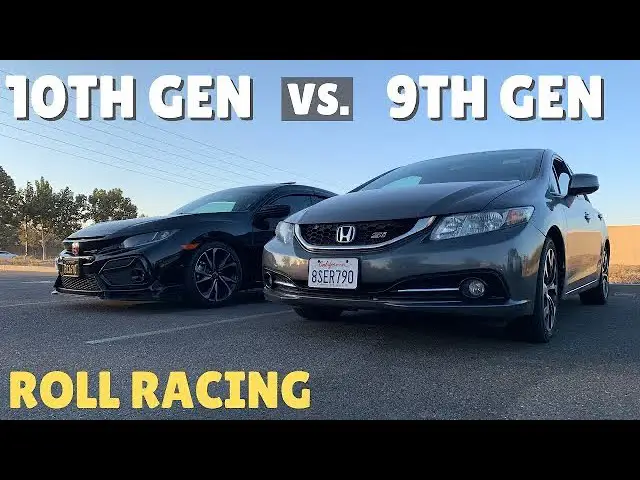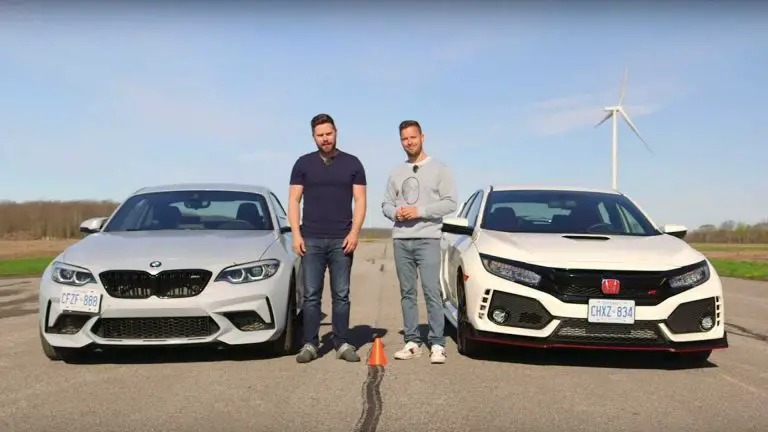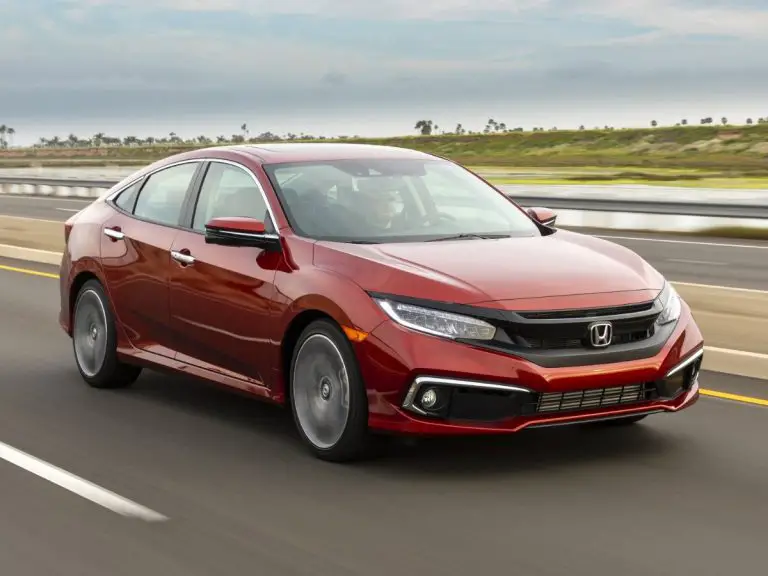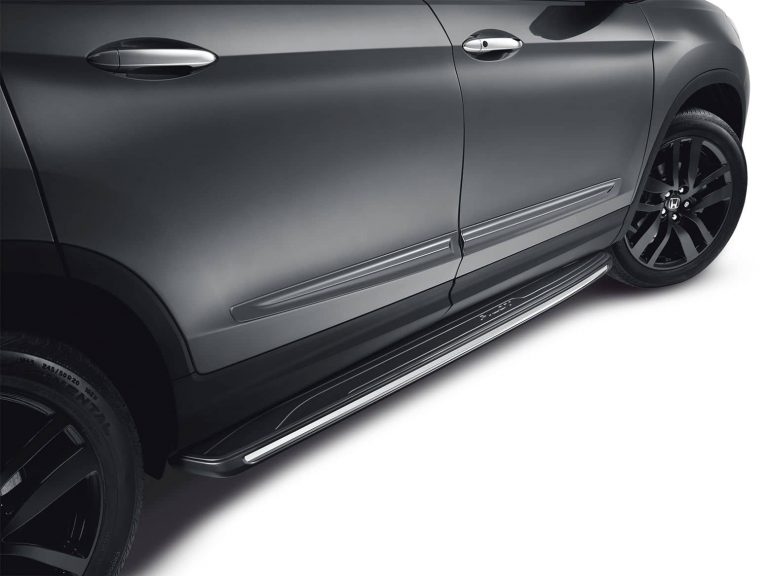The Honda Civic Si is a sport compact car that has been produced by Honda since 1984. The Si designation stands for “Sport Injected” and was originally introduced on the third-generation Civic in 1988. For the fourth-generation model, the Si received a significant power boost with the addition of a turbocharger.
The current generation Civic Si is powered by a 1.5L turbocharged four-cylinder engine that produces 205 hp and 192 lb-ft of torque. The turbocharged engine in the Civic Si gives it a significant power advantage over the naturally aspirated engine in the standard Civic. However, there are some trade-offs that come with this extra power. The turbocharger adds complexity to the engine and increases maintenance costs. Additionally, the turbocharger can cause lag when accelerating from a stop, which can be frustrating for some drivers.
The Honda Civic Si is a sporty and powerful car that has been a favorite among enthusiasts for many years. The Si designation denotes the high-performance version of the standard Civic model. In recent years, the Civic Si has come equipped with a turbocharged engine, giving it even more power and performance.
However, there are some who believe that the Si would be even better with a supercharger instead of a turbocharger. So, which is better? Read the whole article to learn the differences and decide which one is the best for you.
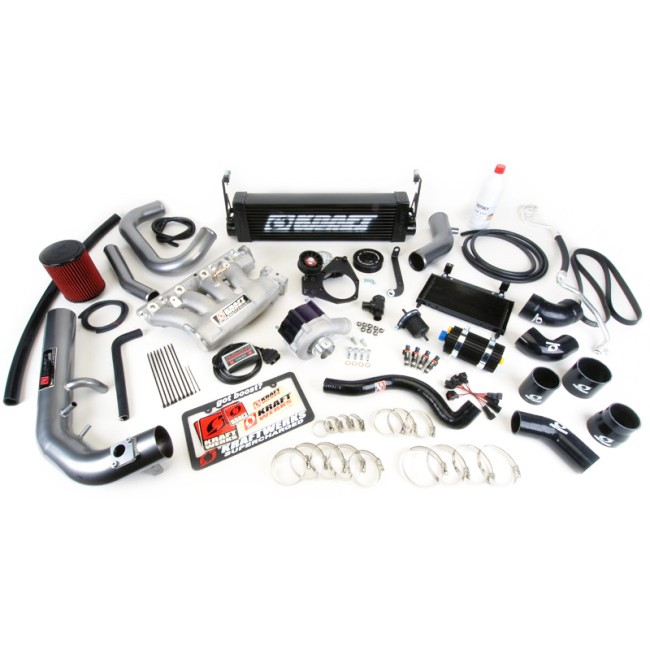
Credit: kraftwerksusa.com
Can You Turbo Charge a Civic Si?
If you’re looking to boost the performance of your Honda Civic Si, you may be wondering if it’s possible to turbocharge the engine. While there are some aftermarket kits available that claim to do just that, we don’t recommend going this route. Here’s why:
The biggest issue is that the Civic Si isn’t designed to be turbocharged from the factory. That means that any aftermarket kit is going to be a bit of a makeshift solution, and it’s likely that there will be fitment and compatibility issues. Furthermore, because the engine wasn’t designed for forced induction, there could be serious reliability and durability concerns down the line if you do choose to turbocharge your Civic Si.
Additionally, even if you do manage to get an aftermarket kit installed successfully, you’re not likely to see a huge performance gain from doing so. The extra power produced by the turbocharger will be offset by the fact that the smaller displacement engine in the Civic Si won’t be able to take full advantage of it. In other words, you’re better off leaving your Civic Si naturally aspirated and focus on other modifications that will give you more bang for your buck performance-wise.
Can You Put a Supercharger on a Type R?
There are a few different ways to skin this particular cat, so to speak. You could either buy a supercharger kit designed specifically for the Type R model, or you could try and piece one together yourself. We’ll explore both options in this article.
If you go the route of buying a kit, there are a few things you need to keep in mind. Firstly, make sure that the supercharger is compatible with your Type R’s engine. There are several different models of the Type R, each with slightly different engines.
Do your research and make sure that the supercharger will work with your car. Secondly, consider whether you want an external or internal unit. External units are easier to install but can be more expensive.
Internal units require more work to install but may be less expensive in the long run. If you decide to piece together your own supercharger kit, there are a few things you’ll need to source on your own. Firstly, you’ll need to find a suitable supercharger unit.
Again, make sure that it is compatible with your Type R’s engine before making any decisions. Once you’ve found a supercharger unit, you’ll need to procure all of the necessary mounting brackets and hardware needed to secure it in place. This can be tricky depending on what model of Type R you have – some models have more space than others for installing aftermarket parts like this.
Once everything is mounted securely, connect all of the hoses and wiring according to instructions (or have someone experienced to do it for you). With either method (buying a kit or piecing one together), the installation will take some time and effort but ultimately isn’t too difficult if everything fits correctly and everything is hooked up properly. Follow these steps and enjoy increased power from your Honda Type R!
How Can I Make My Civic Si Faster?
If you’re looking to make your Civic Si faster, there are a few things you can do. First, you’ll want to make sure your car is in good shape and well-maintained. This means regular oil changes and tune-ups, as well as keeping an eye on your tire pressure and making sure your brakes are in good condition.
Next, you can add some aftermarket parts to help increase performance. A cold air intake will help improve airflow into the engine, while a new exhaust system can help improve breathing and reduce back pressure. If you’re willing to spend a little more money, upgrading the turbocharger or adding nitrous oxide injection can really boost power output.
Finally, improving your driving skills can also help you go faster around the track or down the drag strip. Practice makes perfect, so try attending a driving school or track day event to learn from experienced drivers. With a little effort and time spent behind the wheel, you should be able to see some serious speed gains in your Civic Si!
Can a Honda Civic Be Supercharged?
Yes, a Honda Civic can be supercharged. There are several aftermarket kits available that will allow you to do this, and the results can be impressive. A supercharger will significantly increase the power output of your Civic, and it can make for a very fun and fast car.
There are a few things to keep in mind if you’re thinking about doing this, though. First, you’ll need to make sure that your engine is in good condition and capable of handling the extra power. Second, you’ll need to get the right kit for your car – there are many different types of superchargers out there, so you’ll want to do some research to find one that will work well with your Civic.
And finally, you should be prepared to spend some money on this project – a quality supercharger kit can cost several thousand dollars. But if you’re willing to put in the time and effort, Supercharging your Honda Civic can be a great way to boost its performance.
Turbo Si Sedan 320whp vs Supercharged Si Coupe 325whp
10Th Gen Civic Si Supercharger
Supercharging your 10th gen Civic Si is a great way to improve its performance. By adding a supercharger, you can increase the power and torque output of your engine, making your car more powerful and responsive. There are many different types of superchargers available on the market, so it’s important to do some research to find the best one for your car.
Most aftermarket superchargers for the 10th gen Civic Si will work with both manual and automatic transmissions. However, there are a few things you need to keep in mind when choosing a supercharger for your car. First, make sure that the supercharger you choose is compatible with your engine type.
Second, consider the size of your engine – too much boost from a large supercharger can damage smaller engines. Finally, think about how much power you want to add – too much power can make your car difficult to control.
Once you’ve chosen the right supercharger for your car, installing it is relatively straightforward.
However, it’s always best to consult with a professional mechanic before undertaking any major modifications to your car. With the help of a professional, you can be sure that your new supercharger is installed correctly and safely.
Conclusion
When it comes to choosing a Civic Si supercharger or turbo, there are a few things to consider. If you’re looking for more power, then a turbo is the way to go. However, if you’re looking for better fuel economy and less noise, then a supercharger is the better option.
